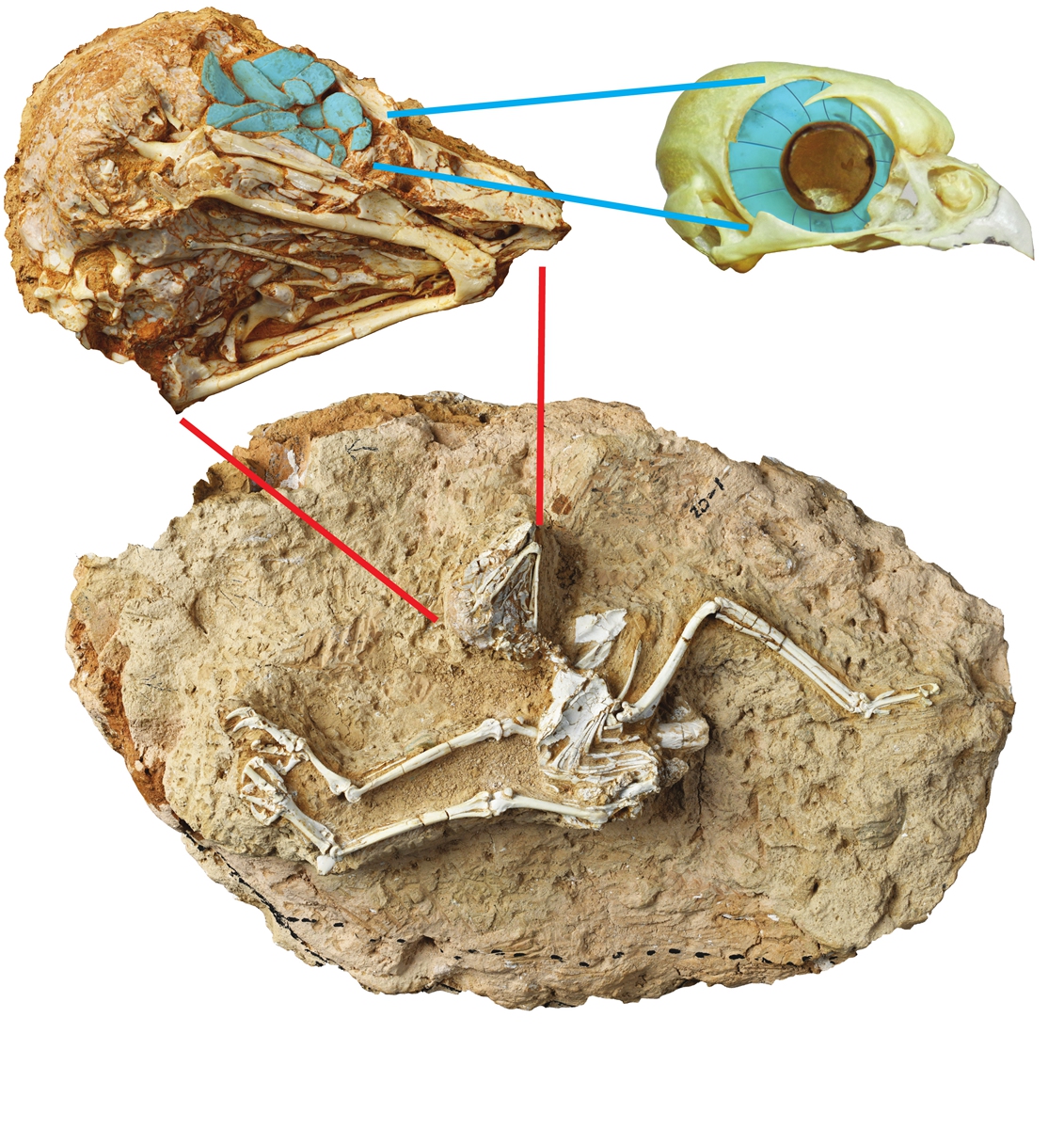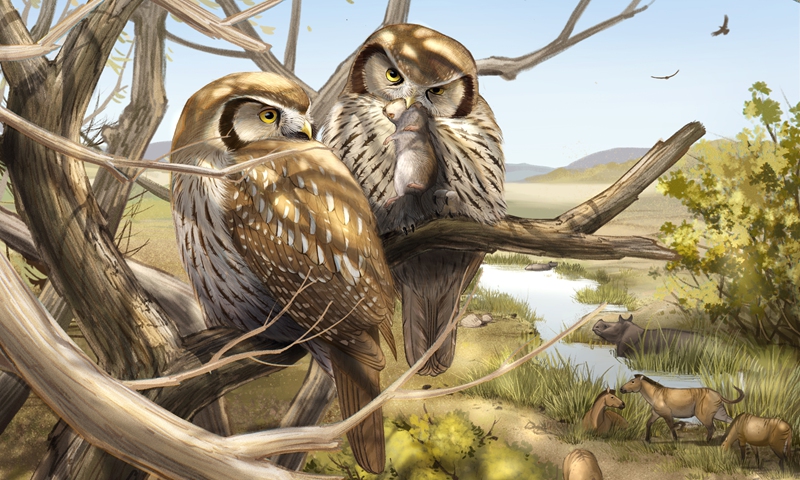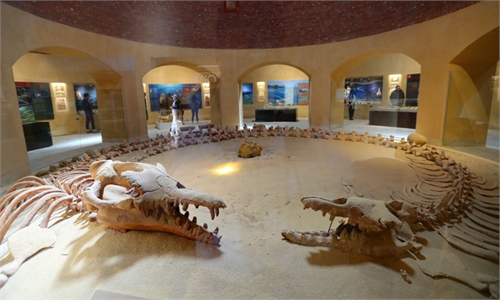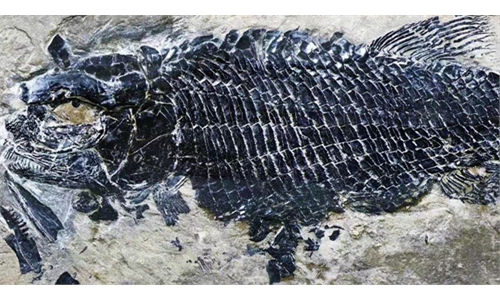Fossil found on edge of the roof of the world reveals an owl active during the day 6 million years ago

A well-preserved fossil of an owl found in northeastern edge of China's Qinghai-Xizang Plateau Photo: Courtesy of Institute of Vertebrate Paleontology and Paleoanthropology of the Chinese Academy of Sciences
A species of diurnal owls was identified from a piece of fossil found on northeastern edge of the Qinghai-Xizang Plateau in China, giving clues on how the diurnal birds evolved in the mostly nocturnal species.
Most owls living today are nocturnal, giving them a special status in myths of different cultures and symbolize magic due to the popularity of Harry Potter series.
A research team from the Institute of Vertebrate Paleontology and Paleoanthropology of the Chinese Academy of Sciences discovered the fossil in good state of preservation. The specimen is close to the northern hawk owl, a medium-sized owl of the northern latitudes, non-migratory and diurnal. The extinct owl belongs to clade Surniini which contains most living diurnal owl species.
A comparison of sclera bones of the Miocene owl and 55 reptiles and 360 birds, including many owls, showed the ancient bird's eyes are less open to light and enable it to see things clear during the day, according to a statement by the institute.

Restoration image of an extinct owl living in foothill of China's Qinghai-Xizang Plateau 6 million years ago Photo: Courtesy of the Institute of Vertebrate Paleontology and Paleoanthropology of the Chinese Academy of Sciences
Paleotologists found the newly identified diurnal owl lived around 6 million years ago in the late Miocene period. The discovery was published on Proceedings of the National Academy of Sciences of the United States of America (PNAS) on Monday.
Phylogenetically constrained character mapping coincides with a reconstruction of the owl group's early evolutionary reversal away from nocturnal habits. The findings support a potential Miocene origin of nonnocturnal habits in a globally distributed owl group, which may be linked to steppe habitat expansion and climatic cooling in the late Miocene, according to the study.
The fossil and associated analyses of the eye and behavioral evolution also point to a long evolutionary history of nonnocturnal behavior among owls that has yet to be studied in detail.



